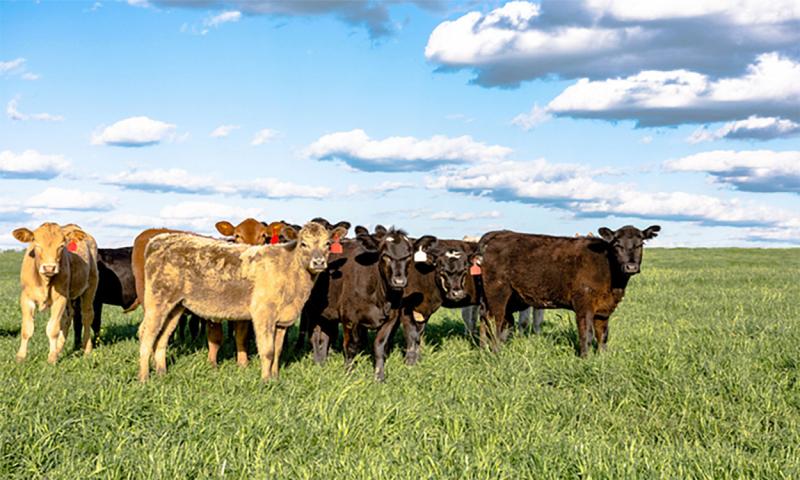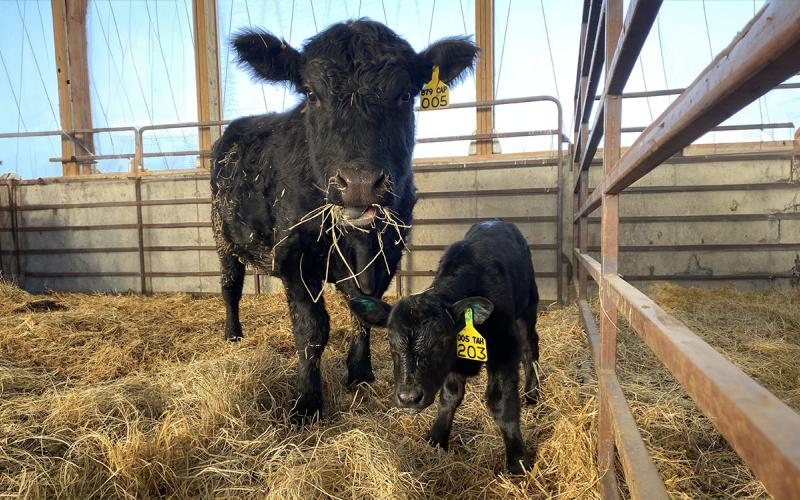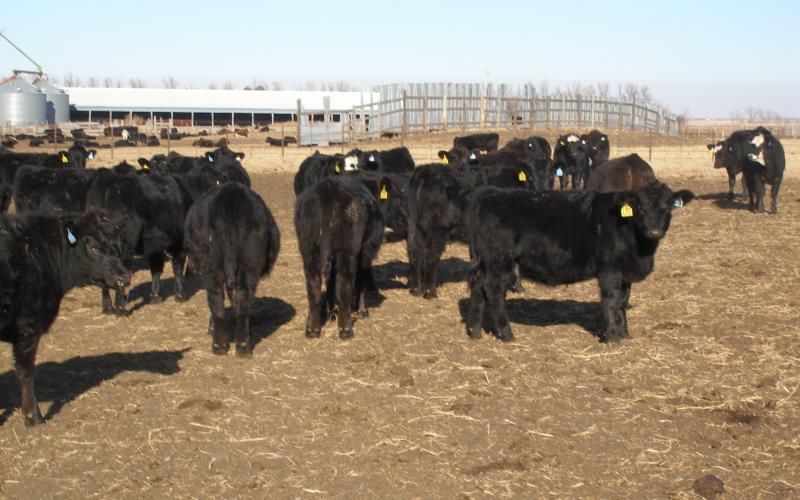Producers invest substantial money into developing and ensuring that their replacement heifers have reached puberty and are in good condition for breeding. Research conducted at the USDA Meat Animal Research Center and with South Dakota herds has reported that heifers that calve within the first 21 days of the breeding season have greater longevity and increased weaning weight through six calving seasons compared to heifers that calve in the second 21-day period or later in the breeding season.
Timing of Pasture Turnout

Management and timing of pasture turnout influences the impact on conception rates. Research conducted at SDSU has shown when heifers are moved from confinement to grazing, a sustainable reduction in pregnancies occurs in the first 21 days.
The immediate movement of heifers following artificial insemination shows the largest impact. Since heifers have typically been fed in a bunk for several months prior, they are “re-learning” grazing skills, which creates a negative energy balance due to lack of intake. Research completed at the Antelope Research Station reported that when heifers were moved from drylot to range, they lost weight (3.5 lbs./d) during the first week, whereas range-developed heifers gained weight (2.0 lbs./d; Perry et al., 2013). However, after 27 days of grazing, there was no difference in ADG between heifers developed in a drylot and heifers developed on forage. So, when observing heifers, we may not notice this short period of negative energy; however, it can impact conception rates, especially during the early period after breeding.
A second possible reason for the observed reduction in conception rates in developing heifers is the increased activity level once moved to range. Researchers at SDSU conducted a second experiment on sixty-nine drylot-developed heifers, which were allotted to one of two treatments: 1) heifers remained in the drylot, or 2) heifers were moved to graze spring forage for 42 days prior to breeding. Daily activity was measured by pedometers (steps per day). Heifers that were grazing spring forage took more steps per-day compared to heifers in the drylot. However, when drylot heifers were moved to spring pasture, they had increased activity compared to those with previous experience grazing spring forage. This is significant, because energy requirements increase with activity, yet forage intake of developing heifers may be reduced due to the re-learning of grazing behavior—creating an increased opportunity for pregnancy loss.
Post-AI Management Options
Reducing changes in diet immediately following breeding allows for the best possibility of heifers successfully conceiving. A few post-AI management options to consider include:
- Move heifers to grass 30 to 45 days prior to breeding. These animals will move through the negative energy balance period and be back on a positive energy level prior to the AI or breeding time. Additionally, they have reestablished their grazing skills to select a high-quality diet.
- Heifers can be kept in the drylot after breeding and fed a similar diet. SDSU researchers kept heifers in the drylot for 45 days post-AI and found no differences in conception rates. However, there are indications that 30 days post-AI might be sufficient.
- Avoid making big changes in your heifer management program if pregnancy rates are acceptable. Rest assured your system is working.
In Summary
Management pre- and post-AI or bull turnout is important to achieve desired conception rates. The financial investment in getting heifers bred early (first 21 days) has a long-time impact on the cow success in the herd, making these heifer development considerations essential.


